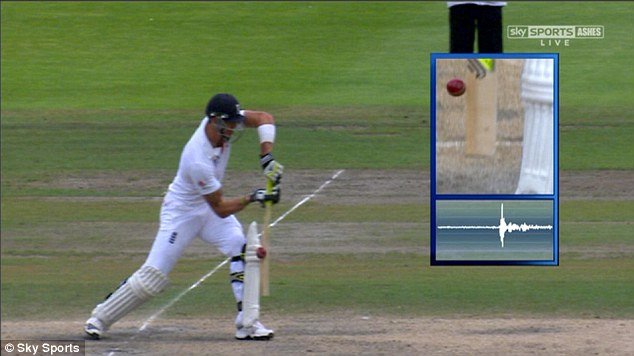What is Snicko in Cricket? A Detailed Explanation of the Snickometer and Its Role in DRS
Snicko, short for Snickometer, is a crucial piece of audio-visual technology used in modern cricket officiating, primarily as part of the Decision Review System (DRS). Its fundamental purpose is to definitively determine whether the ball has made contact with the batter’s bat or glove before being caught by a fielder or hitting the pad. The technology derives its name from the cricketing term “snick,” which describes a faint edge off the bat.

What is Snicko in Cricket?
How the Snickometer Technology Works
The Snickometer is a sophisticated diagnostic tool that combines highly sensitive sound detection with synchronized video replay to pinpoint contact.
The Mechanics of Detection
- Sensitive Microphone: The equipment operates using an extremely sensitive microphone strategically placed near the stumps (often in one of the middle stumps or the pitch matting). This microphone is specifically designed to isolate and pick up the subtle sound frequencies associated with the ball striking solid objects.
- Oscilloscope and Waveform: The sound picked up by the microphone is fed into an oscilloscope, which translates the audio frequencies into a visual waveform displayed across the bottom of the video screen.
- Synchronization: This waveform display is synchronized precisely with the slow-motion video footage of the delivery. As the third umpire reviews the replay, they watch the video frame-by-frame while monitoring the waveform for sudden spikes.
Interpreting the Waveform
The key to the Snickometer is the interpretation of the visual spike on the waveform:
- Contact Confirmed: A sudden, distinct spike or deviation in the flat line indicates a sound wave has been recorded. By matching the moment of the spike with the exact video frame where the ball passes the bat, the official can confirm whether bat or glove contact occurred.
- No Contact: If the ball passes the bat cleanly, the waveform remains flat, indicating the ball did not hit the bat, glove, or any part of the batter.
While the equipment monitors play in real-time, the final decision review is always conducted by the third umpire in slow motion to ensure precise synchronization and analysis of the subtle sounds.
Role of Snicko in the Decision Review System (DRS)
The Snickometer is primarily used to resolve ambiguous appeals, adding a layer of objective evidence that was unavailable to the on-field umpires.
Resolving Caught Appeals
Snicko’s primary function is to resolve appeals for Caught dismissals, particularly Caught Behind the Wicket (by the wicketkeeper) or Bat-Pad catches (by close-in fielders).
In these situations, the contact between the ball and the bat or glove is often minimal, undetectable by the naked eye, and too faint for the on-field umpire to definitively judge. The third umpire uses the Snickometer to:
- Confirm an Edge: Look for a spike in the waveform concurrent with the ball passing the bat or glove. If a spike is confirmed, the dismissal is upheld (provided the catch was clean).
When Do You Get a New Ball in Cricket?
Aiding LBW Decisions
Snicko is also a crucial preliminary tool for judging Leg Before Wicket (LBW) referrals.
- Invalidating LBW: The first step in an LBW review is to check for bat contact. If the Snickometer confirms the ball struck the bat or glove before hitting the pad, the LBW appeal is immediately overruled, and the batter is ruled Not Out.
- Proceeding to Ball Tracking: If Snicko confirms no contact with the bat or glove, the review proceeds to the next stage, where ball tracking (Hawk-Eye) is used to determine if the ball would have hit the stumps.
Reception, Technological Alternatives, and Controversy
Since its initial development by computer scientist Allan Plaskett in the mid-1990s and its subsequent adoption by broadcasters, the Snickometer has played a transformative role in cricket officiating, although it has not been immune to criticism.
Integration and Influence
Early use of Snicko was primarily for entertainment purposes and to analyze umpiring decisions for television audiences.
However, its effectiveness in highlighting clear umpiring errors quickly led to the technology being formally implemented into the DRS protocols to assist the Third Umpire. Its high accuracy in detecting genuine contact has made it an essential part of the modern appeal process.
Alternatives and Complements
Snicko is not the only technology used to detect contact. It often works alongside two other systems:
- UltraEdge: A more refined version of the acoustic detection system, also using specialized microphones to detect sound spikes.
- Hot Spot: This system uses infrared cameras to detect heat friction. When the ball makes contact with the bat, pad, or glove, a white patch appears on the infrared image, providing visual evidence of contact.
Occasional Controversy and Limitations
Like all technology, Snicko has limitations. Issues have occasionally arisen where the audio-visual synchronization was called into question, or where a spike appeared to be inconclusive or contradicted other evidence.
Furthermore, when the technology has been unavailable for logistical reasons (such as during the 2021/22 Ashes series due to travel issues), its absence has highlighted the degree to which players, umpires, and fans have come to rely on its objective evidence for making accurate dismissal calls.

Rivcky John
A prominent figure in sports journalism for the last two decades. Cricket Analyst & Writing News, Features, Match Previews/Reviews/Reports, And Opinion Pieces on Cricket. You can connect with him on Facebook also.
